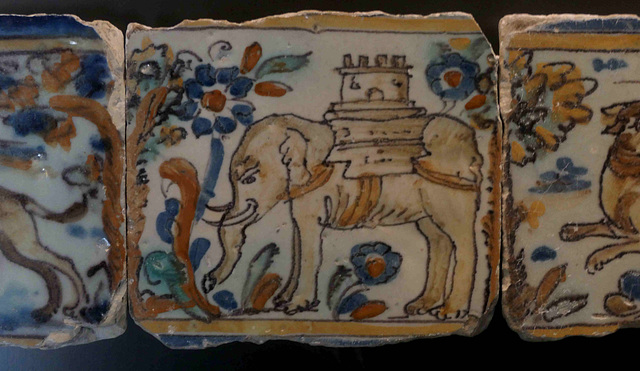Sevilla - Real Alcázar de Sevilla
Sevilla - Shoes
Sevilla - La Exposicion Sevillana
Sevilla - El Sopa de Gansos
Sevilla - Taberna de Las Escobas
Sevilla - Catedral de Santa María de la Sede
Sevilla - Catedral de Santa María de la Sede
Sevilla - Catedral de Santa María de la Sede
Sevilla - Catedral de Santa María de la Sede
Sevilla - Catedral de Santa María de la Sede
Sevilla - Catedral de Santa María de la Sede
Sevilla - Catedral de Santa María de la Sede
Sevilla - Catedral de Santa María de la Sede
Sevilla - Catedral de Santa María de la Sede
Sevilla - Catedral de Santa María de la Sede
Zafra - Palacio de los Duques de Feria
Zafra - Palacio de los Duques de Feria
Zafra - Via de la Plata
Zafra
Zafra - Farmacia Buzo
Zafra - Plaza Grande
Zafra - Plaza Grande
Zafra - Santa María de la Candelaria
Sevilla - Real Alcázar de Sevilla
Sevilla - Real Alcázar de Sevilla
Sevilla - Real Alcázar de Sevilla
Sevilla - Real Alcázar de Sevilla
Sevilla - Real Alcázar de Sevilla
Sevilla - Real Alcázar de Sevilla
Sevilla - Real Alcázar de Sevilla
Sevilla - Real Alcázar de Sevilla
Sevilla - Real Alcázar de Sevilla
Sevilla - Real Alcázar de Sevilla
Sevilla - Real Alcázar de Sevilla
Sevilla - Real Alcázar de Sevilla
Sevilla - El sombrero de tres picos
Sevilla - Metropol Parasol
Jerez de la Frontera - Mercado de Abastos
Jerez de la Frontera - El Gallo Azul
Jerez de la Frontera - Iglesia de San Miguel
Jerez de la Frontera - Iglesia de San Miguel
Jerez de la Frontera - Iglesia de San Miguel
Jerez de la Frontera - Iglesia de San Miguel
Jerez de la Frontera - Iglesia de San Miguel
Jerez de la Frontera - Iglesia de San Miguel
Location
Keywords
Authorizations, license
-
Visible by: Everyone -
All rights reserved
-
23 visits
Sevilla - Real Alcázar de Sevilla


Seville was a Roman "colonia" since 45 BC. The important city was looted by the Vandals in 428 and developed into a Bishopric seat under Visigothic rule. After the Moors had defeated the Visigoths in the Battle of Guadalete, they conquered Seville and made it the capital of a province. Normans devastated Seville in 844 but Seville was rebuilt and flourished under the different Moorish dynasties. In 1248 Seville was conquered by the troops of Ferdinand III of Castile. The emigration of thousands of Moors to Northern Africa led to a decrease in economics in the whole area. Seville recovered in the 16th and 17th century when it became the hub of Spanish maritime trade. During this period, the port of Seville had a monopoly on overseas trade. Vespucci and Magellan planned and started their voyages here. As a result of the War of the Spanish Succession, in 1717 Seville lost the transatlantic trade monopoly to Cádiz.
The Alcázar of Seville was formerly the site of the city's Islamic-era citadel, whose construction began in the 10th century. It was expanded into a palace complex by the Abbadid dynasty (11th century) and the Almohads (12th to early 13th centuries). After the Castilian conquest in 1248, the site was gradually rebuilt and replaced with new palaces and gardens.
The palace is an outstanding example of the Mudejar style and also includes sections with Gothic and Renaissance elements.
The complex was declared a World Heritage Site by UNESCO in 1987, along with the adjacent Seville Cathedral.
Many walls in the palace are tiled with azulejos. This one depicts a pretty precise elephant.
The Alcázar of Seville was formerly the site of the city's Islamic-era citadel, whose construction began in the 10th century. It was expanded into a palace complex by the Abbadid dynasty (11th century) and the Almohads (12th to early 13th centuries). After the Castilian conquest in 1248, the site was gradually rebuilt and replaced with new palaces and gardens.
The palace is an outstanding example of the Mudejar style and also includes sections with Gothic and Renaissance elements.
The complex was declared a World Heritage Site by UNESCO in 1987, along with the adjacent Seville Cathedral.
Many walls in the palace are tiled with azulejos. This one depicts a pretty precise elephant.
kiiti, aNNa schramm, Paolo Tanino, Alexander Prolygin have particularly liked this photo
- Keyboard shortcuts:
Jump to top
RSS feed- Latest comments - Subscribe to the comment feeds of this photo
- ipernity © 2007-2024
- Help & Contact
|
Club news
|
About ipernity
|
History |
ipernity Club & Prices |
Guide of good conduct
Donate | Group guidelines | Privacy policy | Terms of use | Statutes | In memoria -
Facebook
Twitter

Sign-in to write a comment.